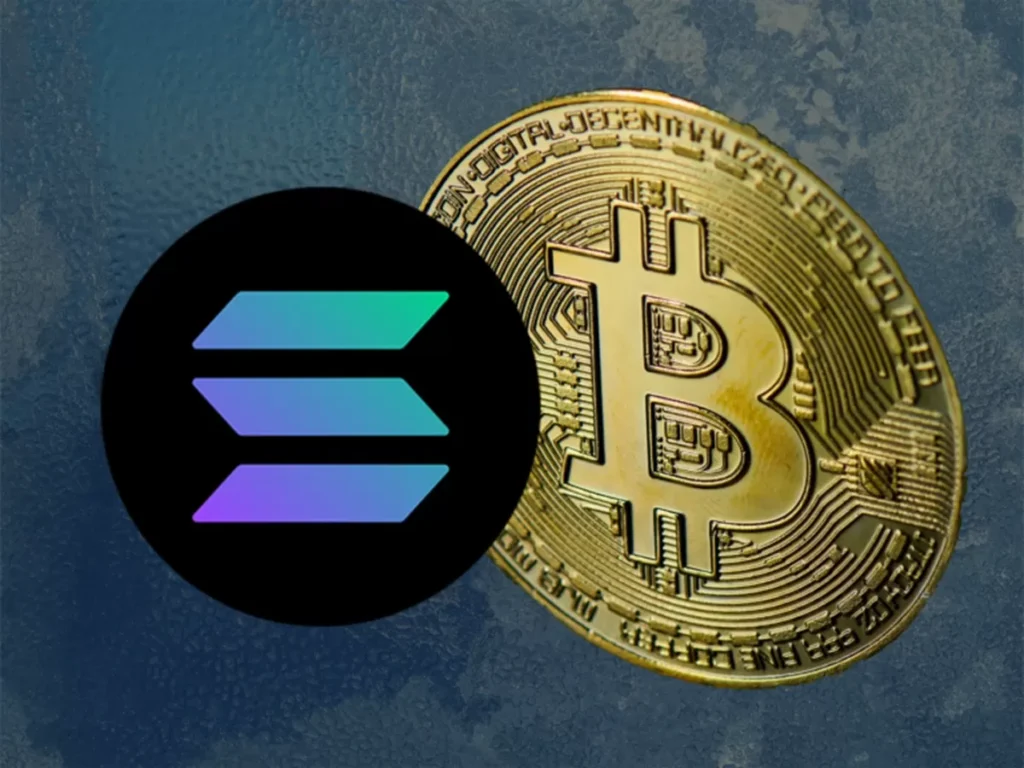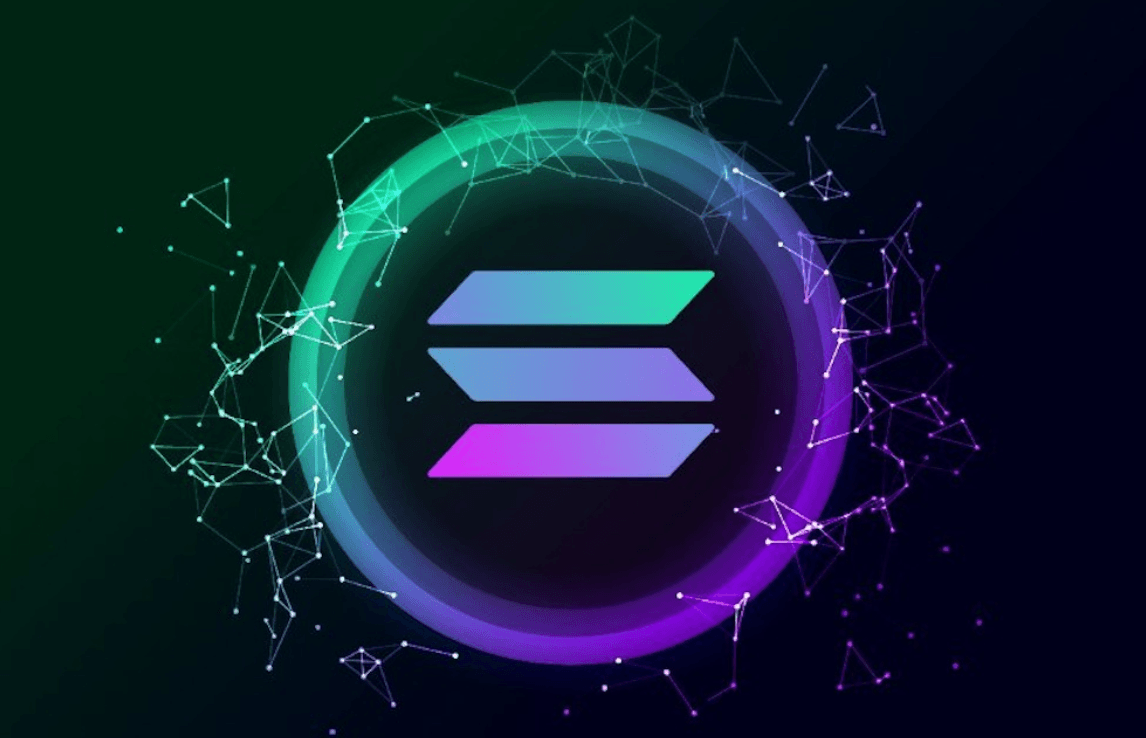Solana has become one of the most important participants in the cryptocurrency space. Solana’s impressive increase in value and popularity has brought attention to its cutting-edge blockchain technology, which has helped it get around some of the drawbacks that other blockchains have. Investors and engineers alike have taken notice of its explosive growth, and it is emerging as a possible leader in the cryptocurrency market. However, what makes Solana’s blockchain technology unique and how has it accomplished such remarkable success?
Solana Fast Scalable Blockchain
Solana is a high-performance blockchain that is intended to provide scalable, safe, and quick decentralised applications (dApps) and cryptocurrency transactions. Its special architecture lowers transaction costs and improves scalability by combining Proof of Stake (PoS) and Proof of History (PoH). Because of this, Solana is one of the fastest blockchains available, processing thousands of transactions per second. Many decentralised applications, like as non-fungible tokens (NFTs) and decentralised finance (DeFi), are supported by the Solana ecosystem. By offering developers and users a more effective platform, Solana hopes to compete with other blockchains like Ethereum thanks to its low costs and high throughput.
Key Features of Solana’s Blockchain Technology
- Proof of History (PoH):This blockchain technology timestamps each transaction, creating an indisputable historical record. Validators can process transactions faster without transaction instructions. Solana reduces computational resources and speeds up transaction processing using this blockchain time layer. Traditional blockchain networks like Bitcoin and Ethereum require several validators to agree on transaction order, slowing transaction processing.
- Proof of Stake (PoS): Proof of Stake chooses validators, whereas Proof of History securely timestamps transactions. Unlike PoW, PoS protects the network without energy-intensive mining. Verification can be done with Solana tokens.Solana handles thousands of TPS cheaply with PoH and PoS. This network executes 65,000 transactions per second, compared to Ethereum’s 30 and Bitcoin’s 7. This scalability allows developers, especially dApp developers, to handle enormous traffic without sacrificing performance.
Solana Affordable Transaction Fees
Another factor contributing to Solana’s success is the extremely cheap transaction costs it offers. While Ethereum fees have been shown to rise during periods of high demand, Solana fuel prices remain consistently low, even in the face of network congestion. With a maximum transaction fee of just a fraction of a cent, Solana is an attractive alternative to Ethereum-based services for developers and consumers who want to avoid the astronomical costs connected with them.The low pricing are made possible by Solana’s efficient infrastructure, which limits network bloat and expenses. This has made adoption much easier, which is particularly helpful in sectors like DeFi where customers are often discouraged from participating due to the astronomical transaction fees.

Solana Scalable Secure Decentralized
Decentralisation and security have not been compromised by Solana, despite its fast transaction speeds and inexpensive fees. A diverse range of validators located all over the world ensures that the network is decentralised and cannot be controlled by a single entity. Any blockchain must prioritise security, and Solana’s consensus process is built to withstand intrusions and malfunctions. Furthermore, scalability was a key consideration in the development of Solana, guaranteeing that performance would not suffer as more validators joined the network. Solana is a reliable solution that can manage increasing demand without sacrificing security or performance since it scales effectively while preserving decentralisation.
Solana Growing Ecosystem and Adoption
The growing ecosystem of Solana also drives its growth. Developers have flocked to the Solana blockchain, generating a dynamic ecosystem of dApps, NFTs, and DeFi platforms. Solana’s rapid transaction rates, low fees, and scalability make it a top choice for projects seeking a high-throughput blockchain without congestion. Major projects, including Serum, Mango Markets, and Audius, have started on Solana, boosting its prominence. The emergence of Solana-based NFTs has highlighted the network’s ability to handle digital collectable demand. Artists and collectors seeking an efficient and economical blockchain have picked Solana for its low-cost NFT generation and trade.
Solana Community-Driven Growth
Another factor contributing to Solana’s success is its vibrant, involved developer and supporter community. Solana’s team made it a top priority to establish a developer-friendly. Environment immediately offers developers strong documentation, tools, and resources to expand the network. Because the platform is open-source, anybody can help create it, and this community. Driven strategy has sped up its expansion. In addition, Solana has a robust ecosystem of projects that support its blockchain, including gaming platforms, NFT marketplaces, and decentralised finance (DeFi) protocols. The Solana blockchain has established itself as a major force in the decentralised technology space thanks to increased cooperation and partnerships across all industries.

Solana Overcoming Challenges Future Growth
Solana has numerous advantages, but there are drawbacks to its quick expansion. The network’s dependability and robustness under high traffic are questioned in light of certain notable disruptions in the past. Although these problems have been addressed by the Solana development team. Any network that experiences rapid adoption needs to constantly change and adapt to. Preserve its security and performance.Solana’s future is bright because of continuous network upgrades and enhancements, such as. Initiatives to strengthen decentralisation and lower the likelihood of outages. Because of Solana’s creative approach to scalability, speed, and cost, the blockchain technology is well-positioned for future growth and acceptance.
Summary
Solana, a high-performance blockchain platform, addresses scalability, speed, and low-cost challenges. Through a unique blend of PoH and PoS, Solana can execute thousands. Of transactions per second while ensuring security and decentralisation. PoH streamlines network timekeeping, avoiding the need for difficult consensus processes. This lowers transaction fees and speeds confirmation compared to Ethereum. Solana’s ecosystem supports several dApps, especially in DeFi and NFTs. Users and developers wanting a more robust blockchain network will like its scalability and efficiency. Solana hopes to revolutionise blockchain technology and mainstream decentralised apps by prioritising fast throughput and low-cost transactions.


